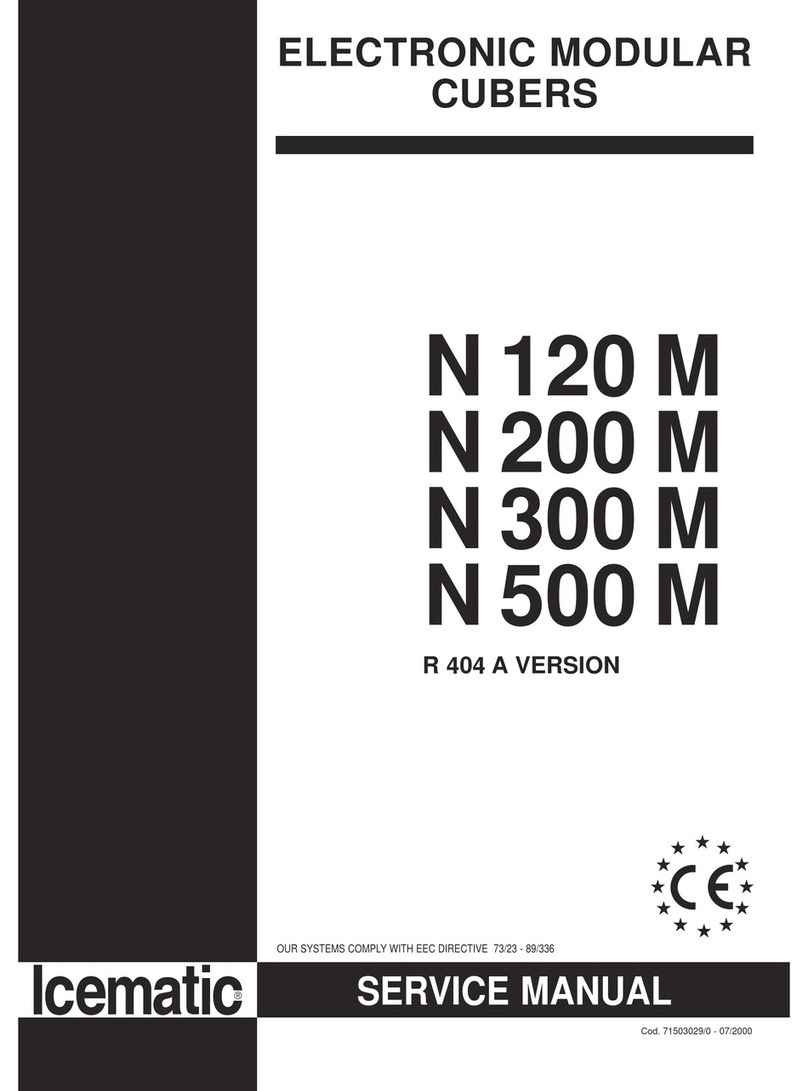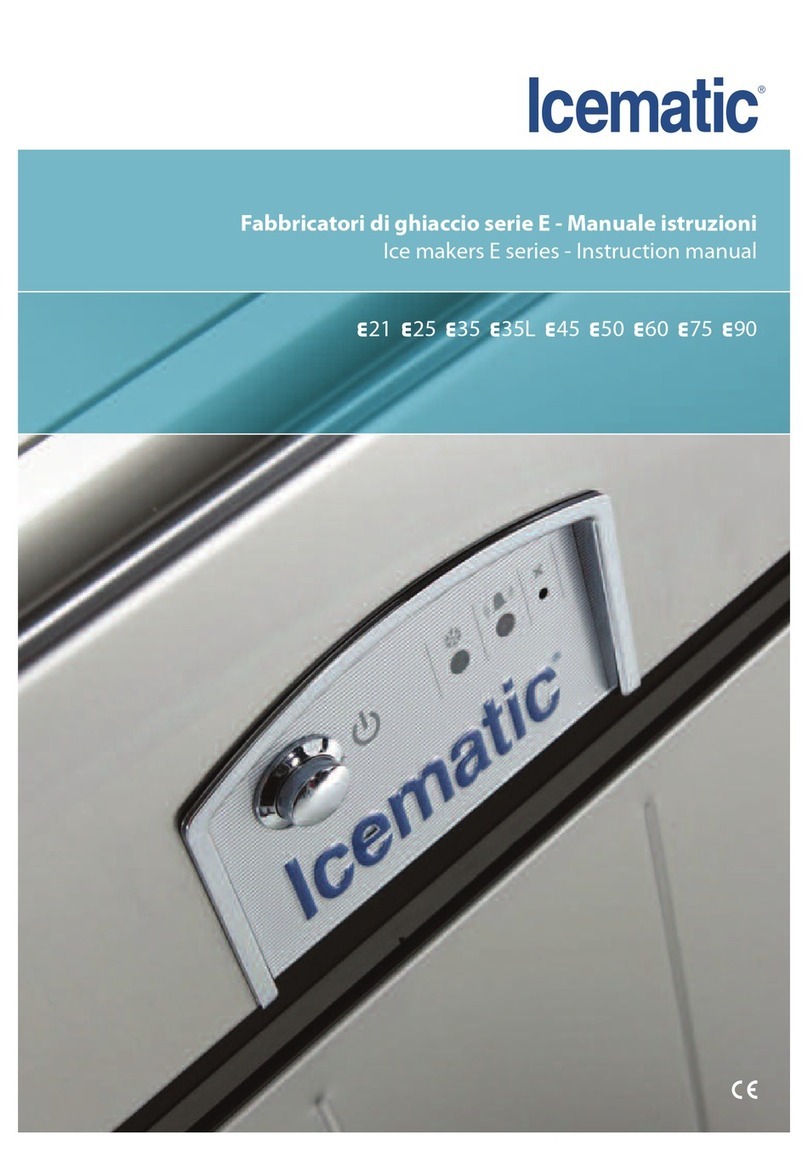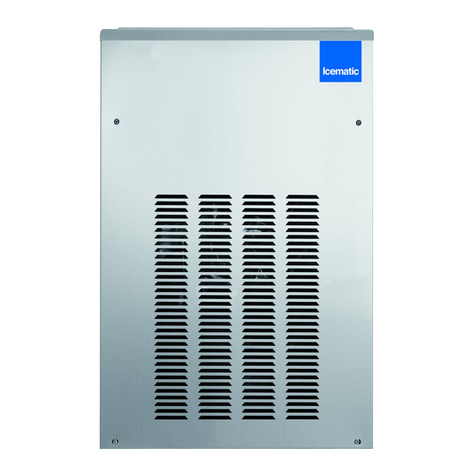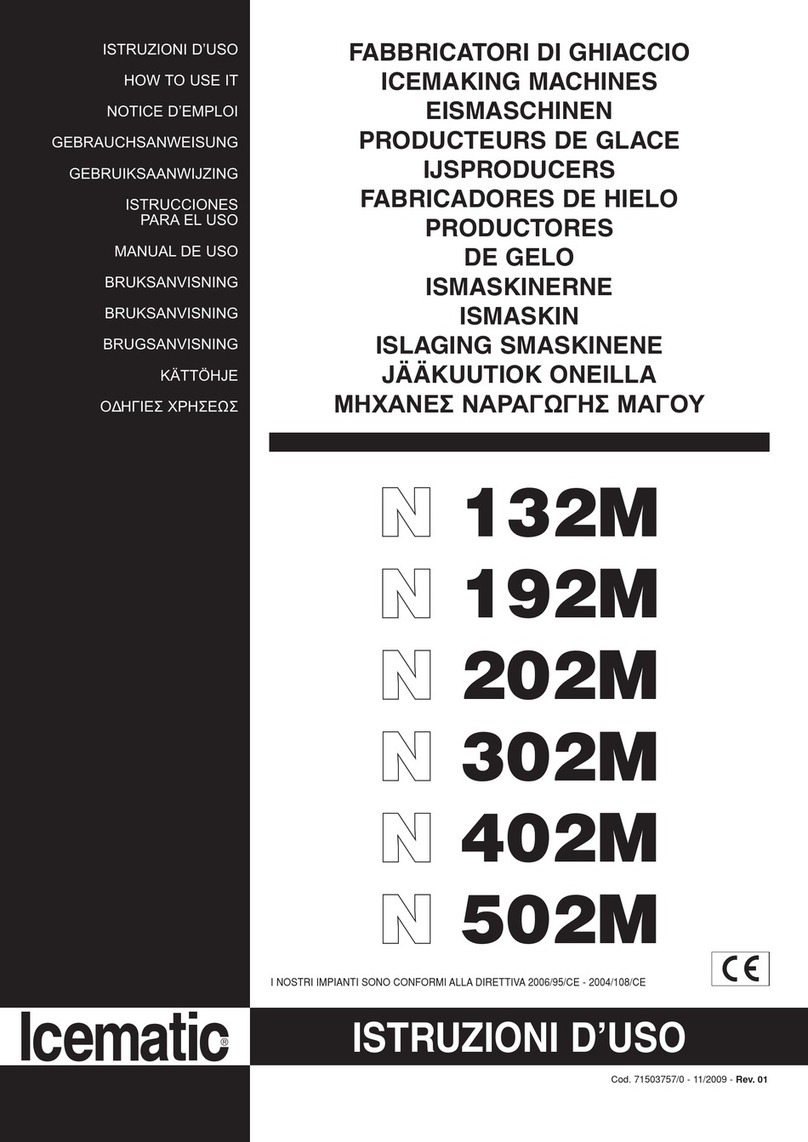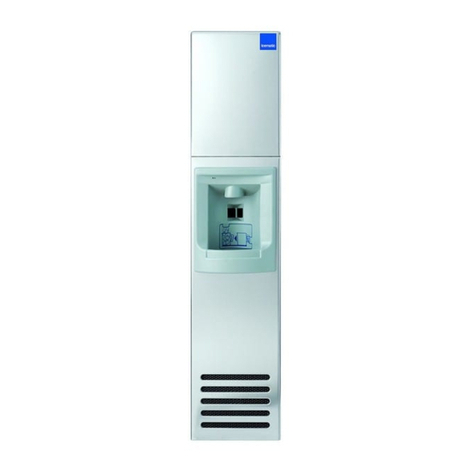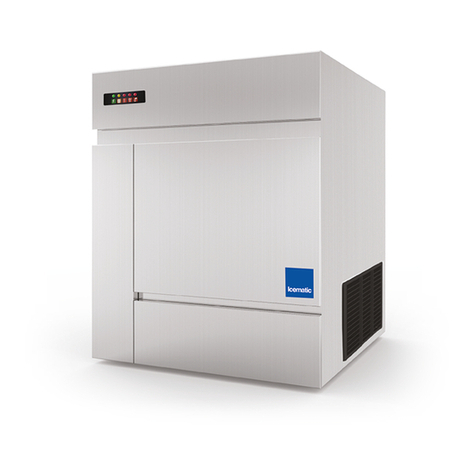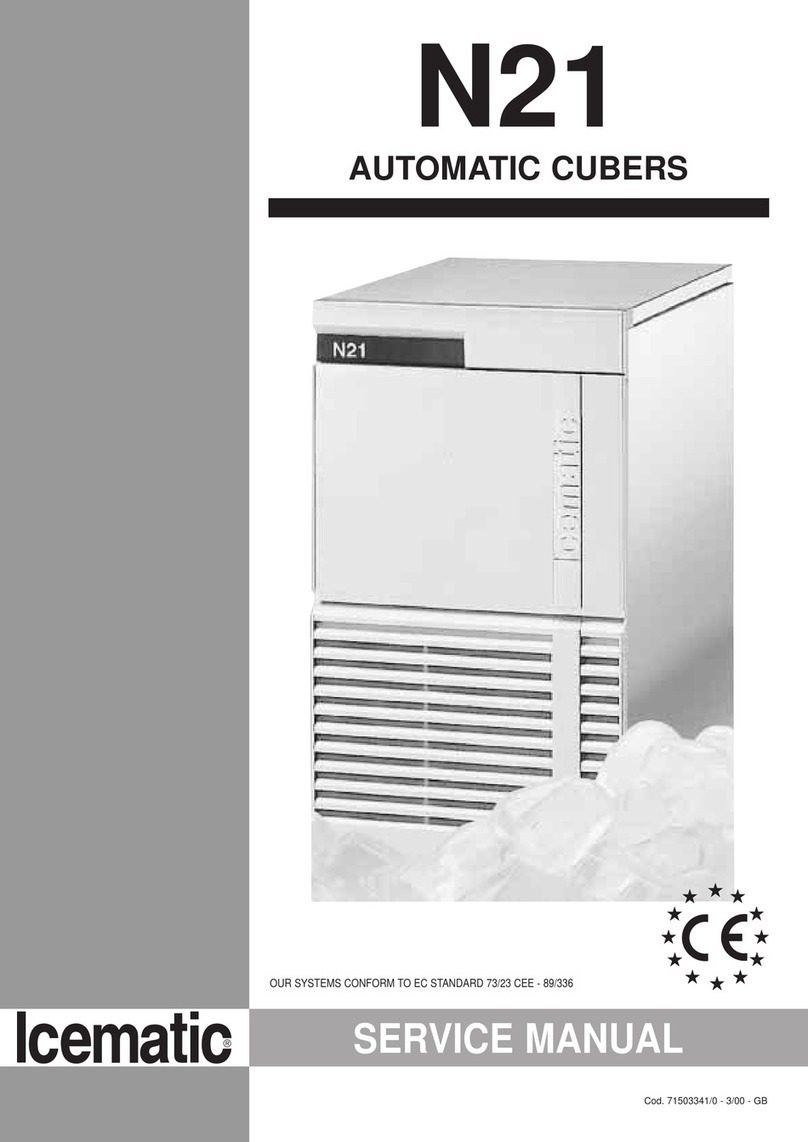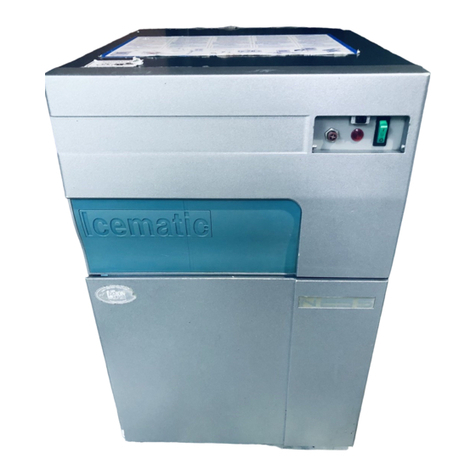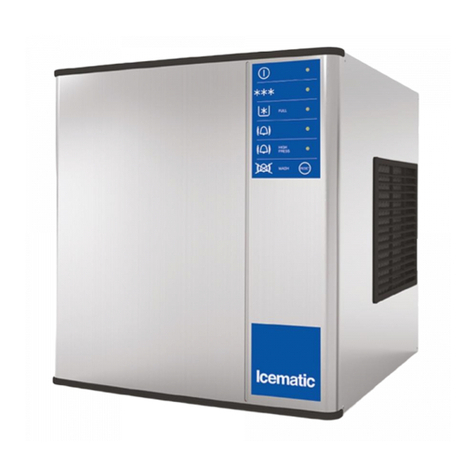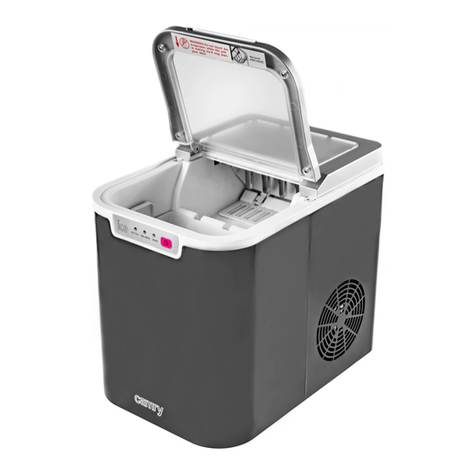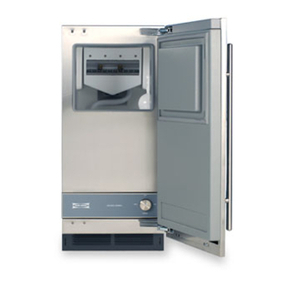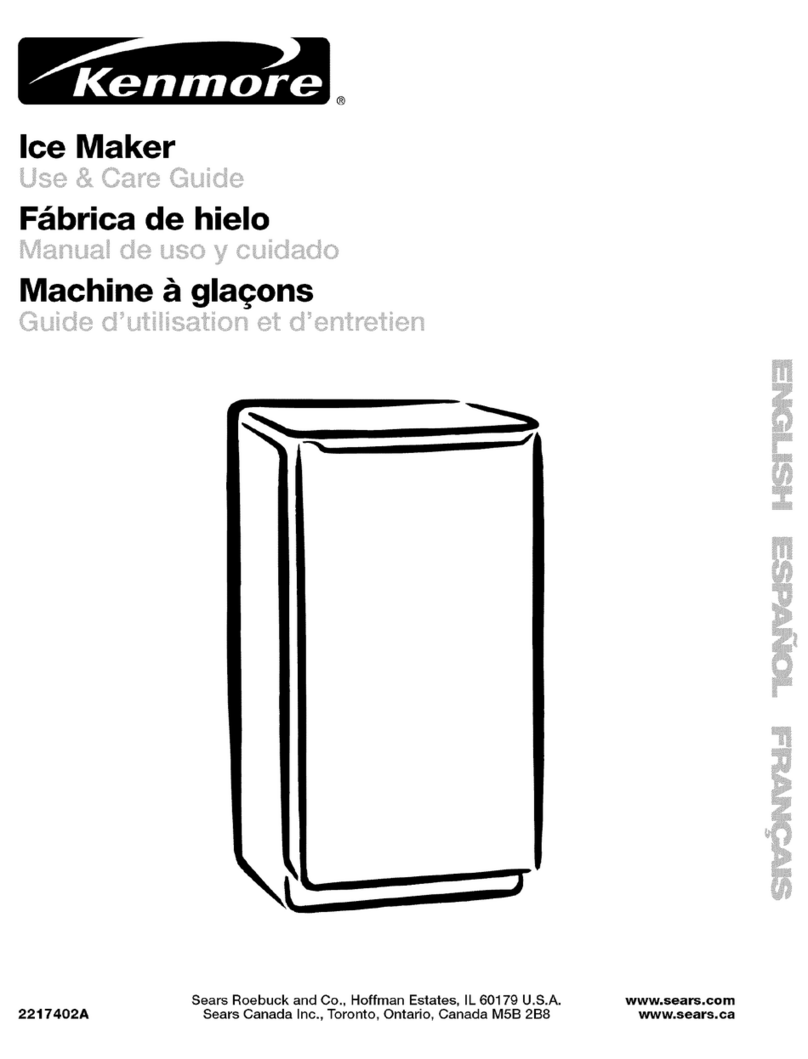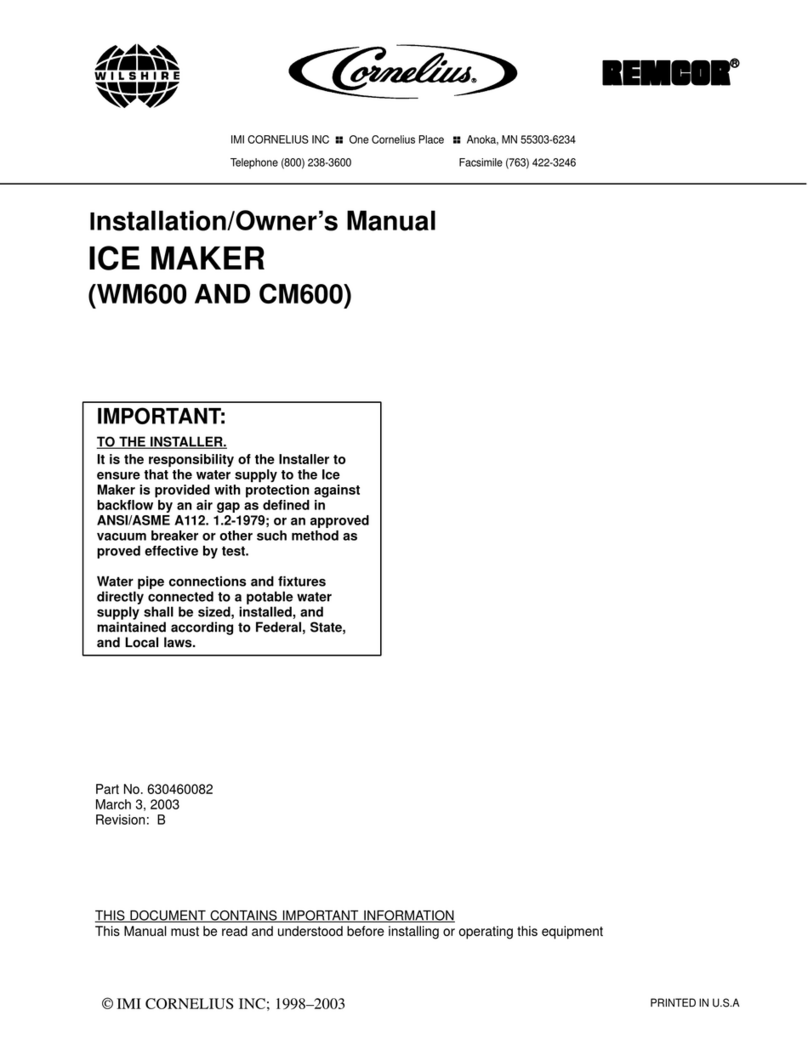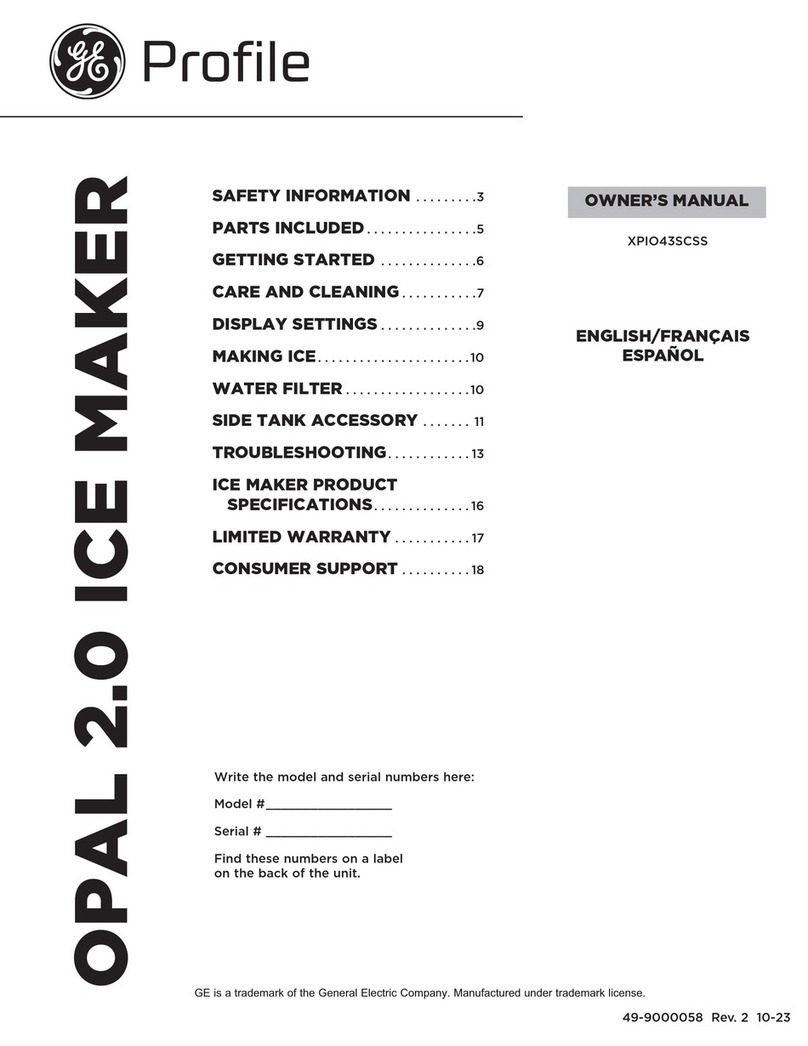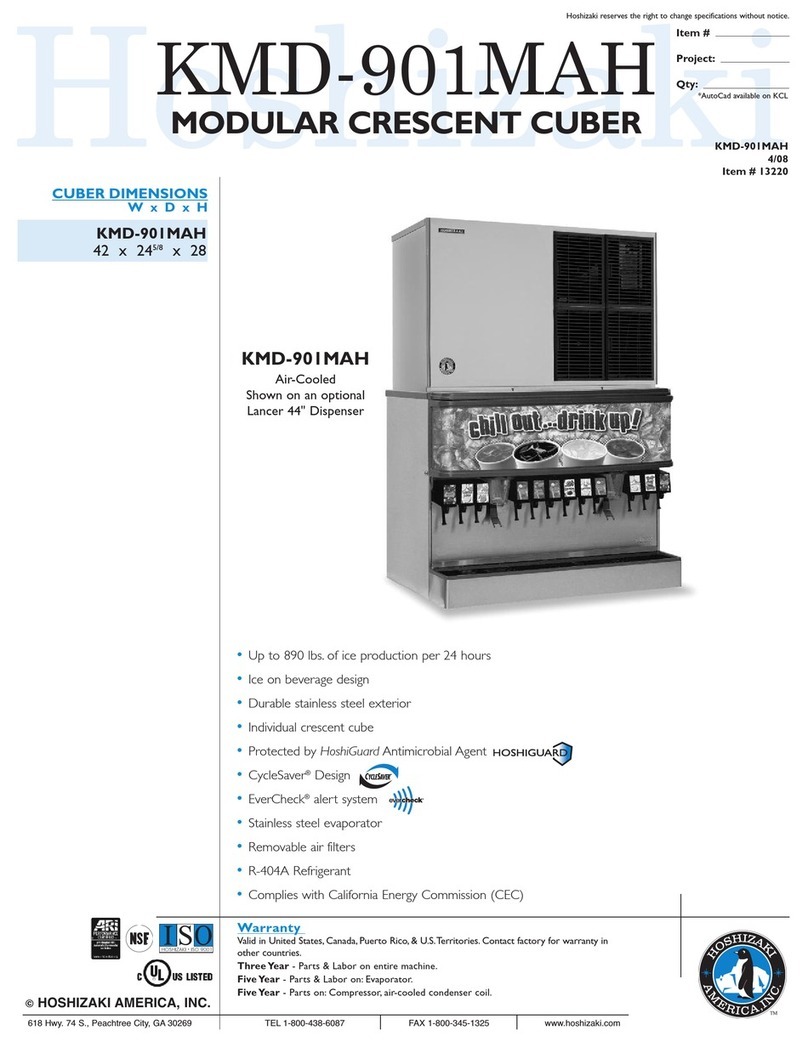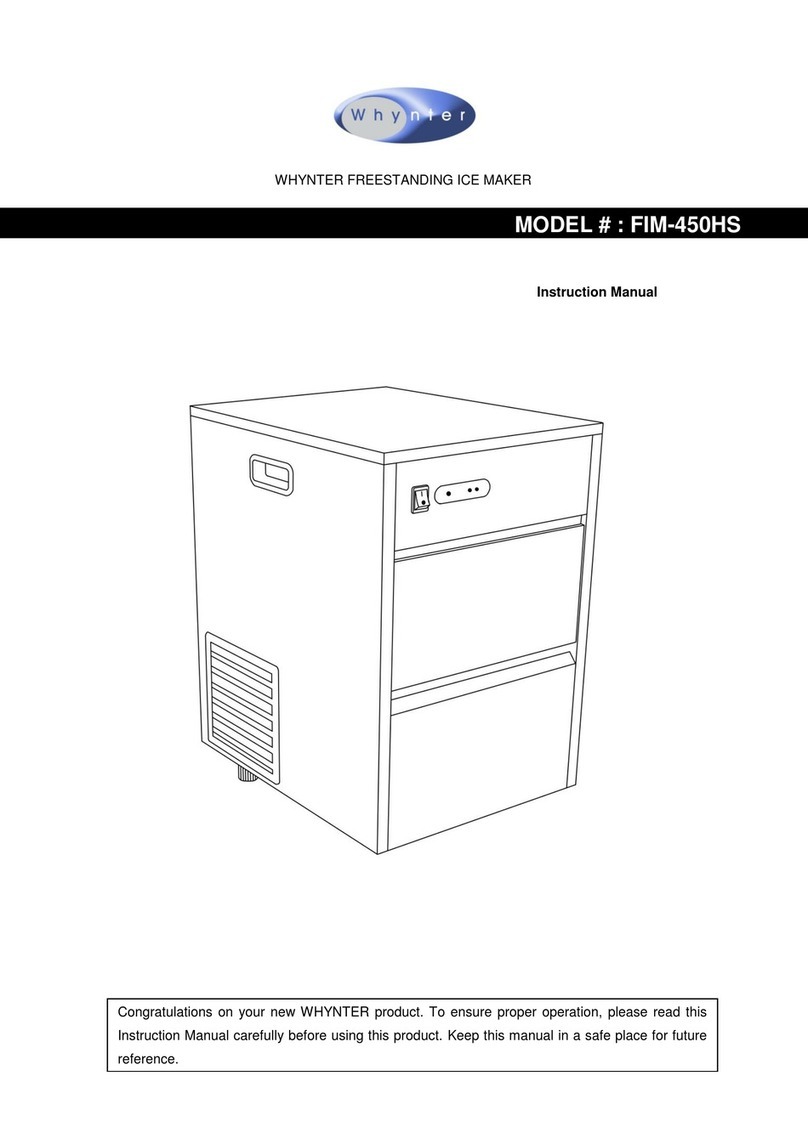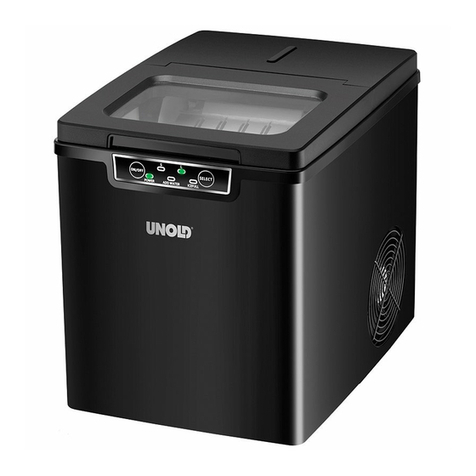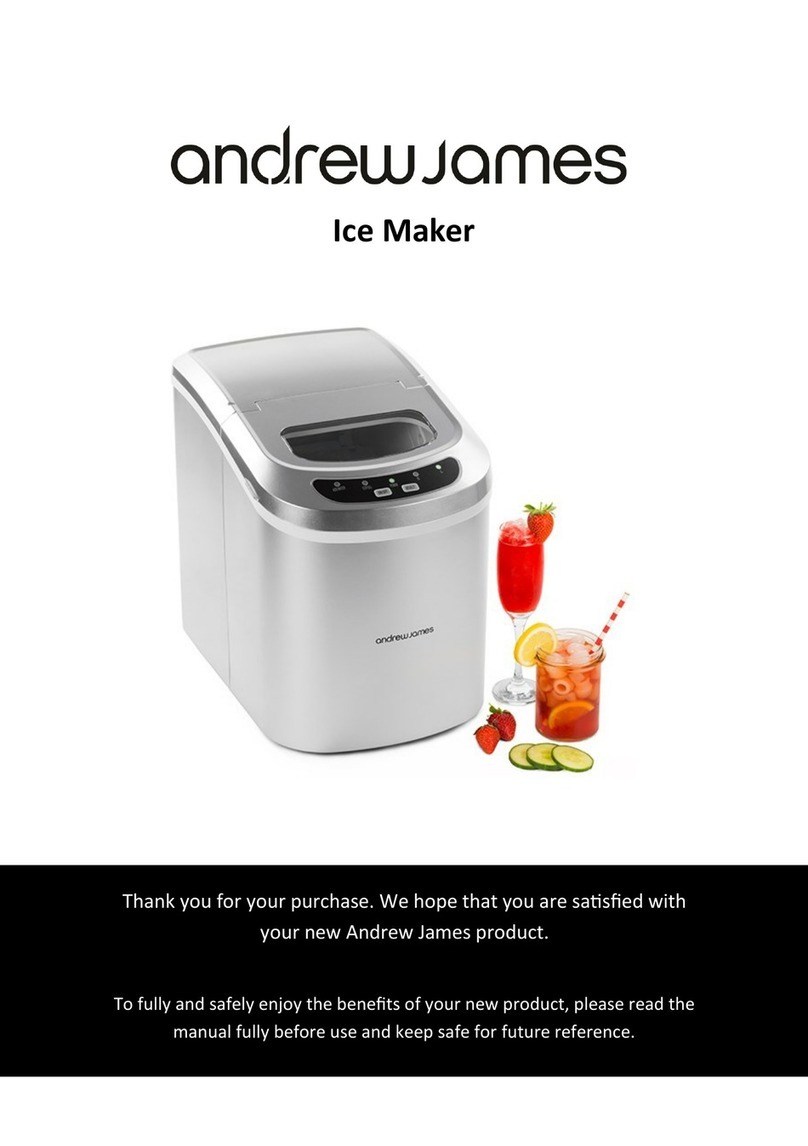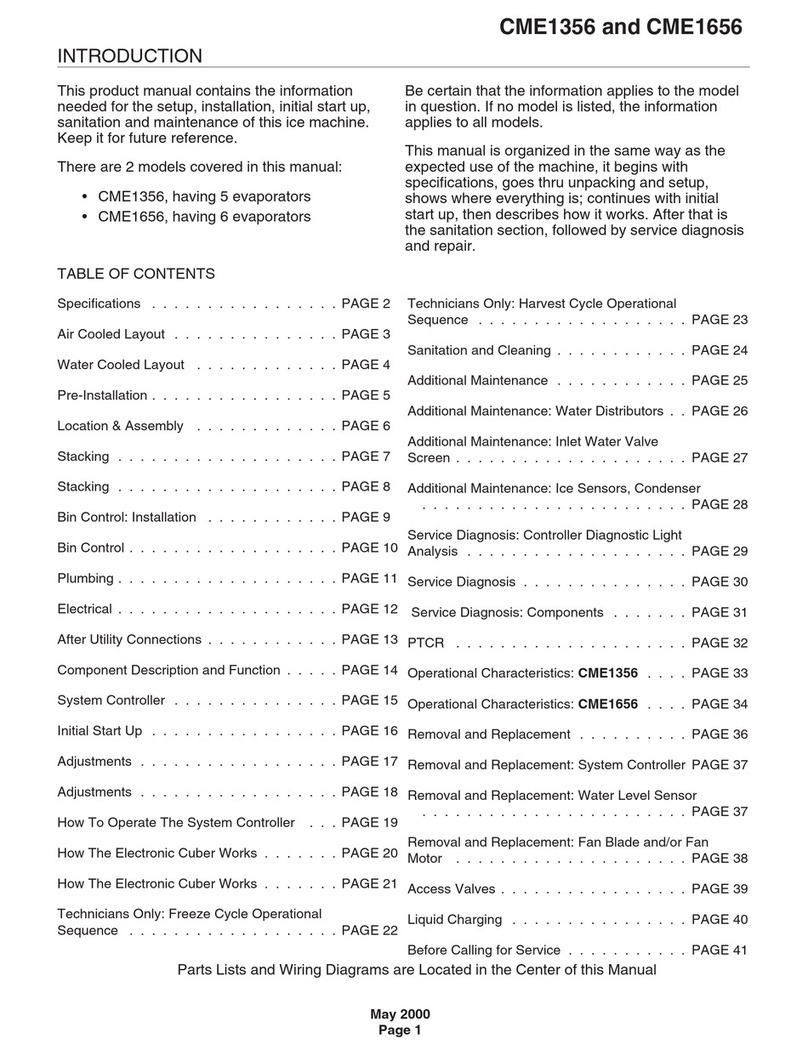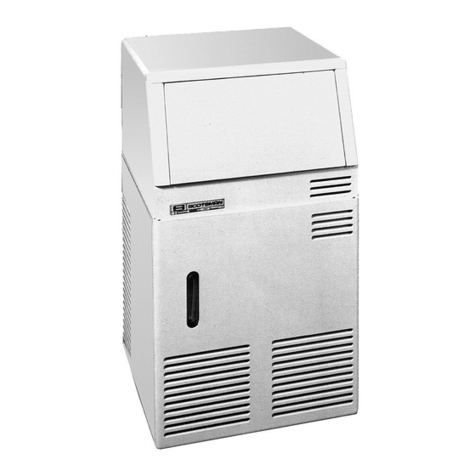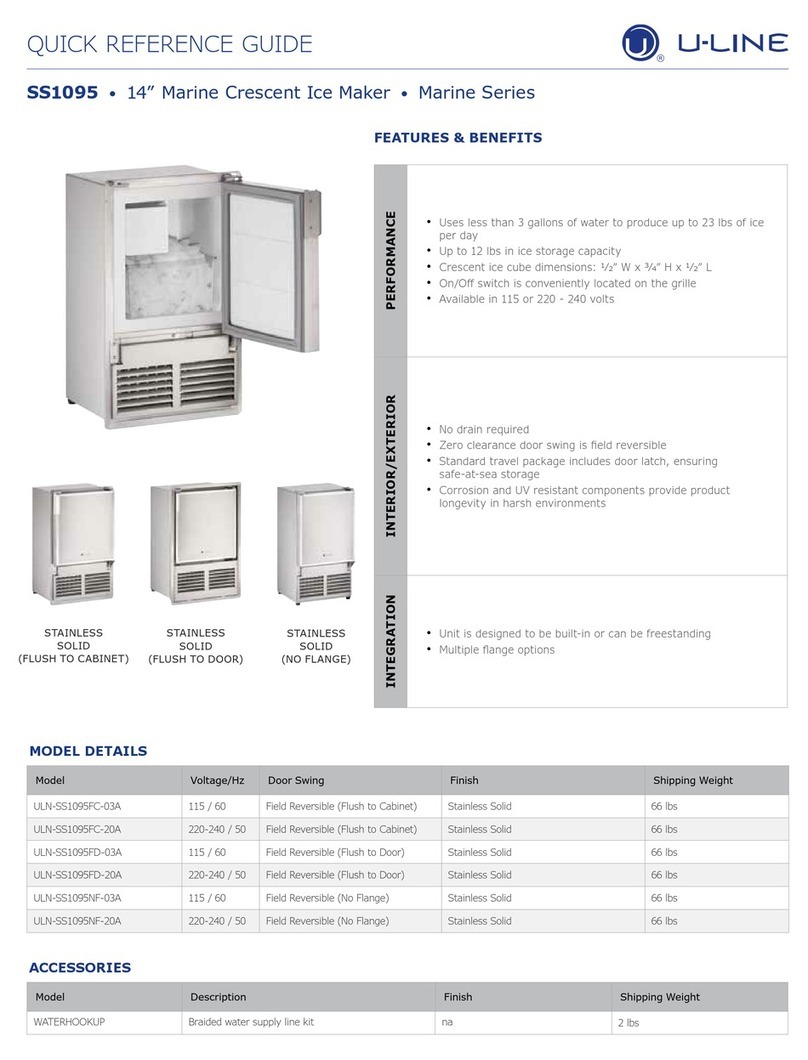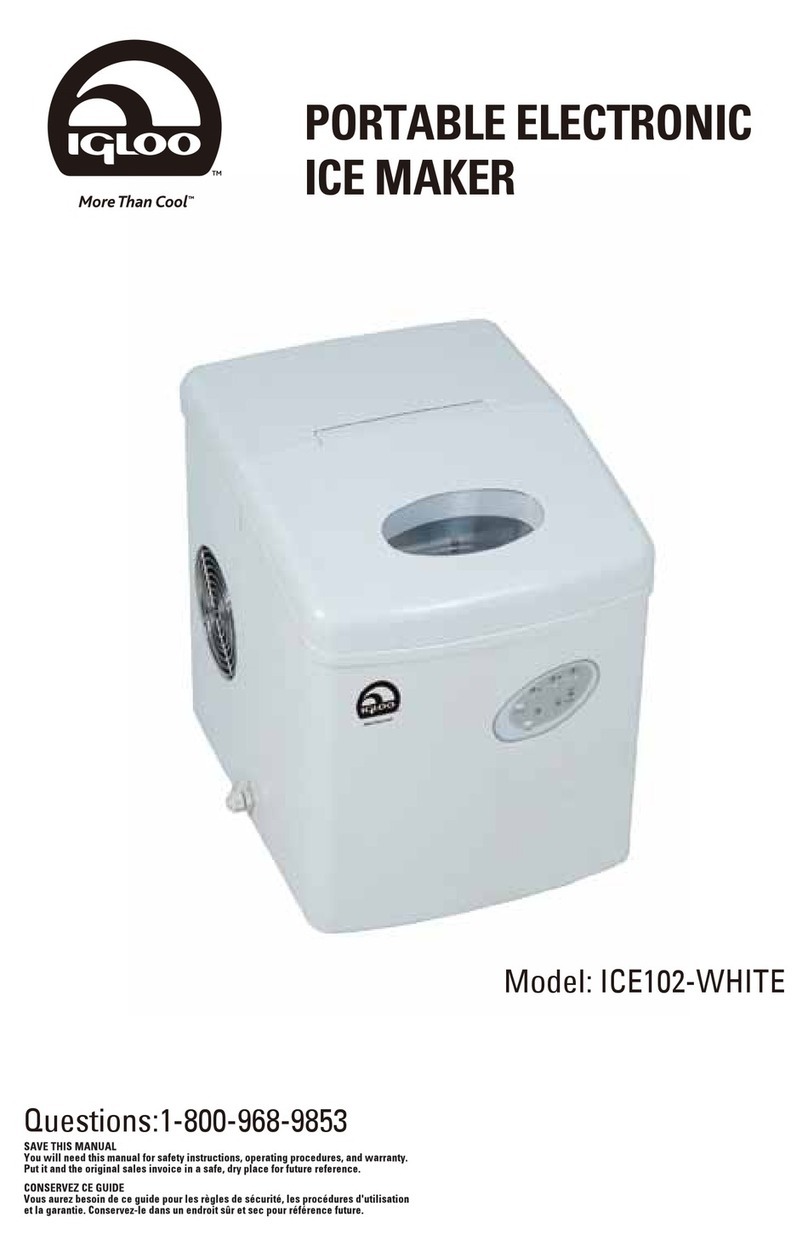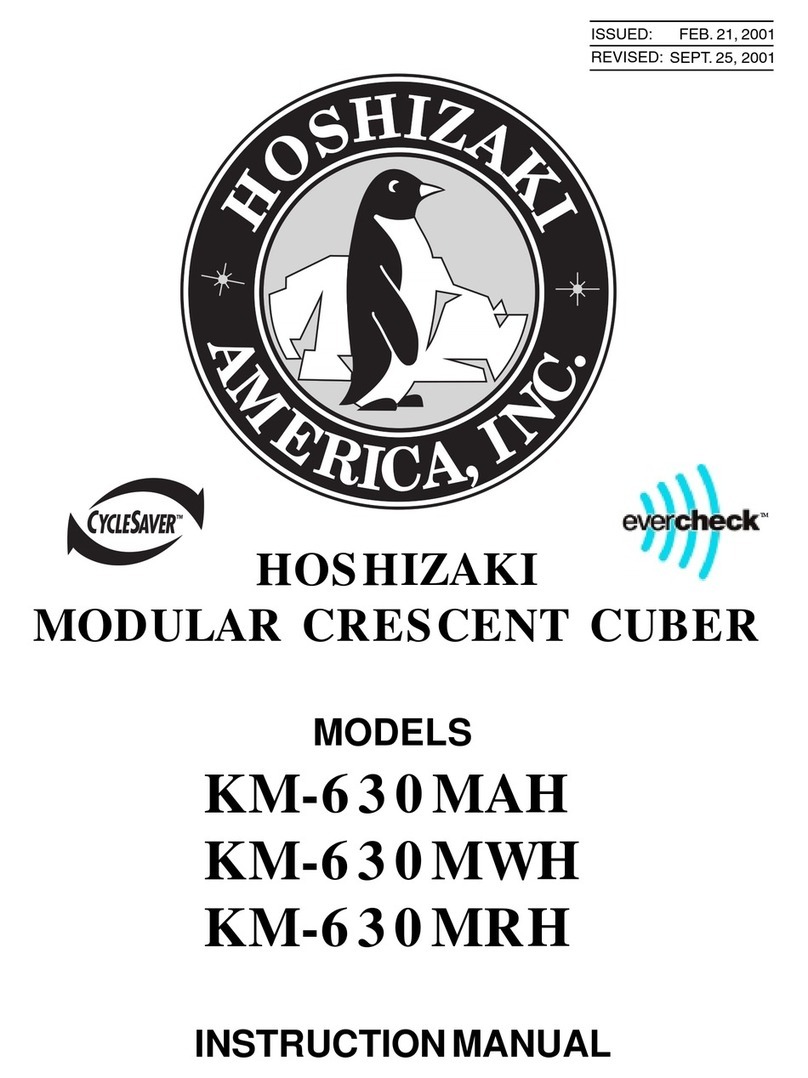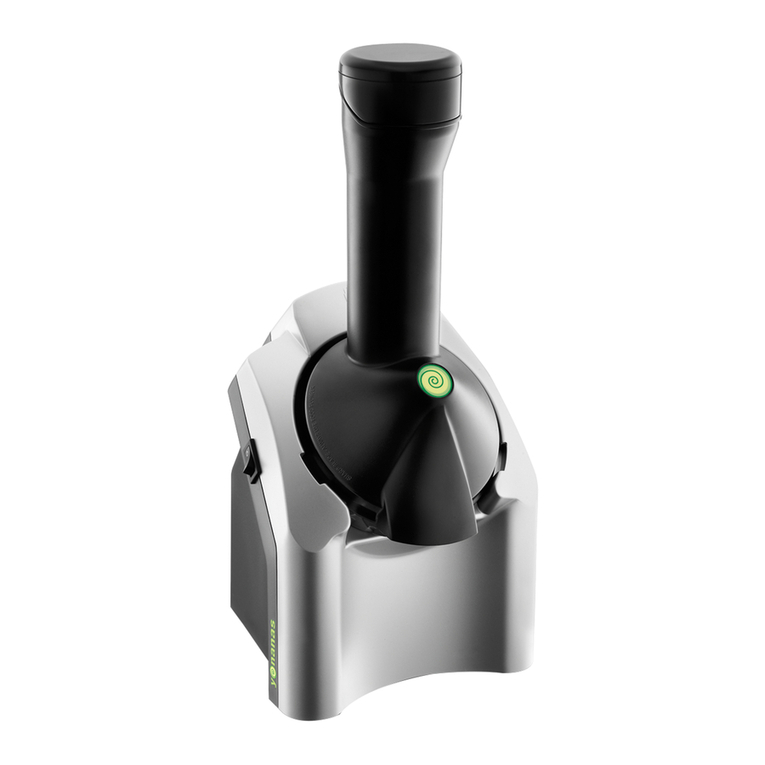
Italiano
671503816/0 - REV.04 01/2013
6. INFORMAZIONI SERVICE
LL= lampeggio lento
LV= lampeggio veloce
LA= Lampeggio alternato
ON= Luce fissa
1. Controllare che il rubinetto della rete idrica di alimentazione
sia aperto, quindi inserire la spina di alimentazione elettrica
della macchina nella presa e accendere l’interruttore di linea
predisposto; la macchina inizia in funzionamento automa-
tico (fig. g) dopo aver premuto il pulsante ON/OFF di av-
viamento (fig. 2@).
2. Controllare che l’acqua arrivi alla vaschetta, che il sensore e/o
il galleggiante arresti l’entrata prima del trabocco e che non
esistano perdite nell’impianto e nei condotti idrici. Il normale
livello d’acqua all’interno della vaschetta è a circa 5./.10 mm.
dai bordi superiori. (fig. k)
La regolazione del livello acqua può avvenire ruotando il
micro galleggiante o il sensore acqua sull’apposita feritoia
prevista sul supporto relativo, previo allentamento della vite
di fissaggio 1 (fig. k). Tale regolazione deve avvenire con ali-
mentazione elettrica disinserita.
3. Verificare che non si producano vibrazioni anormali a causa
di viteria allentata.
4. Nel caso di necessità di intervento per perdite d’acqua, ser-
raggio viteria od altro, arrestare sempre prima il produttore.
5. Controllare un ciclo di produzione ghiaccio verificando che
i cubetti vengano scaricati nel deposito.
6. Verificare la funzionalità della sonda deposito: appoggiando
un cubetto di ghiaccio sul bulbo all’interno del contenitore
il produttore dovrebbe arrestarsi entro 1 minuto e ripartire
automaticamente dopo averlo tolto, in tempo poco supe-
riore.
7. Rimontare il coperchio tolto in precedenza.
LE SEGUENTI OPERAZIONI DEVONO
ESSERE EFFETTUATE ESCLUSIVAMENTE
DA UN INSTALLATORE PATENTATO
5.
ANOMALIE DI FUNZIONAMENTO
•In caso di sovratemperatura condensatore
La macchina si ferma e rimane in funzione solo la condensazione aria/acqua. La macchina riparte automaticamente quando la tem-
peratura ritorna al di sotto dei limiti stabiliti. Solo dopo il terzo allarme consecutivo nell’arco di 5 ore la macchina si arresta definiti-
vamente.
•Ciclo di congelamento troppo lungo
Nel caso di tre allarmi consecutivi nell’arco di 5 ore, la macchina si ferma.
Calcolo del tempo massimo del ciclo di congelamento:
1º ciclo = 50’
2º ciclo = durata del 1º ciclo x 1,5.
Se il 1º ciclo è durato meno di 7’ il tempo massimo del ciclo successivo sarà di 50’.
•Sbrinamento troppo lungo
Tempo di sbrinamento maggiore di 2 minuti e 2 errori consecutivi nell’arco di 5 ore, la macchina si ferma.
•Ciclo di congelamento minore di 7 minuti
L’elettronica calcola il tempo di ciclo troppo lungo uguale a 50 minuti.
•Carico acqua troppo lungo
Se il tempo di carico acqua è superiore a 5’ la macchina si ferma in allarme. Dopo una sosta di 120’ la macchina riparte automatica-
mente. Nel caso di mancanza acqua continuativa, la macchina compie dei tentativi di ripartenza ogni 120’.
4. SEGNALAZIONI
Funzione Stato Led 1
Verde
Led 2
Rosso Note
Macchina accesa ON OFF
Vale per tutti gli stati
che non siano di
allarme/errore
Errore sonda
temperatura
deposito
OFF LL
Sonda temperatura
“out of range”
Macchina spenta
Errore sonda
temperatura
condensatore
OFF LL
Sonda temperatura
“out of range”
La macchina continua a
funzionare
Errore ciclo freddo
troppo lungo
o sbrinamento
troppo lungo
ON ON Macchina spenta
Errore
sovratemperatura
condensatore
OFF ON Macchina spenta
Errore mancanza
acqua LL ON La segnalazione avviene
dopo i tentativi di riavvio
Avviso
manutenzione LA LA
Raggiunto numero ore di
funzionamento stabilito.
La macchina continua a
funzionare
Lavaggio / pulizia LV LV Segnala quando si è nella
routine di lavaggio
Attesa avvio LV OFF Attende di partire dopo lo
spegnimento
Italiano
7
71503816/0 - REV.0401/2013
7. PULIZIA E MANUTENZIONE
• Per la pulizia della carrozzeria, é sufficiente usare un panno
inumidito con un prodotto specifico, privo di cloro, per ac-
ciaio inossidabile.
Nota: Tutte le operazioni di pulizia e manutenzione devono es-
sere eseguite previo disinserimento dell’alimentazione elettrica
dell’apparecchio.
6.1 PULIZIA DEL CONDENSATORE AD ARIA
•Per valorizzare al meglio il vostro produttore in termini di resa
e durata è necessario effettuare ogni settimana la pulizia del
filtro aria posizionato nella parte frontale del produttore (vedi
fig. 2#).
•Per la rimozione del filtro è sufficiente estrarlo e lavarlo con
un getto di acqua tiepida e asciugarlo prima del rimontaggio.
Non utilizzare spazzole o oggetti contundenti per la pulizia
del filtro.
È assolutamente vietato far funzionare il produttore senza
il filtro dell’aria per evitare il malfunzionamento.
6.2 PULIZIA DEL FILTRO ENTRATA ACQUA
•Chiudere il rubinetto d’intercettazione d’acqua all’apparec-
chio, staccare il tubo entrata acqua e sfilare con una pinza la
retina filtrante situata sull’elettrovalvola entrata acqua.
•Pulire la retina con getto d’acqua e rimontarla nella propria
sede.
6.3 PULIZIA DEL CONTENITORE
•Estrarre il ghiaccio dal deposito. Pulire l’interno con una spu-
gna inumidita in acqua tiepida unita ad un poco di bicarbo-
nato di soda;
•sciacquare con acqua pura ed asciugare accuratamente.
6.4 Il CICLO DI LAVAGGIO E SANIFICAZIONE
•Per ovviare ai problemi dati dalla durezza dell’acqua di ali-
mentazione e quindi la formazione di impurità sulle parti e
componenti a contatto con l’acqua, la macchina e’ stata do-
tata di una funzione “Self Cleaning”. Tale funzione, grazie al-
l’azione pulente di un prodotto specifico, una bustina di
prodotto in polvere e la bottiglia dosatrice, permette di man-
tenere pulita e igienizzata la macchina dal calcare e dalle in-
crostazioni.
•Per garantite una buona pulizia del fabbricatore di ghiaccio
si consiglia di eseguire il ciclo di lavaggio almeno 3-4 volte al-
l’anno in funzione della durezza dell’acqua di alimentazione.
Kit lavaggio (optional)
Il kit è composto da una
bottiglia in plastica con
tubo in gomma, una confe
zione di acido citrico da 1
kg. e le istruzioni per il ciclo
di lavaggio.
6.5
COME ESEGUIRE IL CICLO DI LAVAGGIO E SANIFICAZIONE
Prendere le dovute precauzioni nel maneggiare l’acido ci-
trico mentre si prepara la soluzione
(acqua+acido citrico, vedi tabella) indos-
sando guanti e occhiali protettivi.
•Spegnere la macchina.
•Togliere tutto il ghiaccio dal contenitore.
•Servendosi del prodotto specifico e della
bottiglia in plastica, preparare la soluzione
sciogliendo la polvere in acqua tiepida (max.
40°C) secondo le quantità riportate nella ta-
bella allegata. Mescolare il tutto facendo at-
tenzione che non si verifichino dei grumi.
•Accendere la macchina, premendo il pul-
sante ON/OFF e tenendo contemporaneamente premuto
anche il pulsante di RESET (fig. 2@). Per premere il pulsante
di RESET utilizzare una spina di diametro adeguato al foro
sul quadro comandi.
•Entrambi i leds lampeggiano velocemente. Aprire lo spor-
tello del deposito, attendere che la bacinella ritorni in posi-
zione di chiusura. Introdurre la canula nella bottiglia in tutta
la sua lunghezza nell’apposito foro (fig. 2$) e scaricare tutta
la miscela precedentemente preparata, facendo pressione
con le mani sulla bottiglia. Chiudere lo sportello e ripremere
il pulsante RESET per avviare il ciclo di LAVAGGIO.
•Una volta avviato il ciclo di lavaggio il lampeggio dei leds sarà
più lento. Durante la funzione lavaggio provvedere a riscia-
quare abbondantemente il deposito.
•La durata del ciclo di lavaggio e di circa 3 ore.
•Una volta avviata la funzione anticalcare non è possibile in-
terrompere il ciclo di lavaggio. In caso di mancanza di ten-
sione, la macchina riprende da dove si era fermata.
•Al termine del ciclo di lavaggio e risciacquo la macchina ri-
parte in ciclo freddo.
Per tutti gli interventi di manutenzione straordinaria e/o
riparazione (parti meccaniche, frigorifere, elettriche) che
comportino la regolazione e/o sostituzione di componenti,
rivolgersi sempre a un centro servizi autorizzato.
Se l’apparecchio dovesse rimanere inutilizzato per lunghi
periodi:
- disattivare la macchina
- togliere tutto il ghiaccio dal contenitore
- scaricare tutta l’acqua
- eseguire un’accurata pulizia
- lasciare lo sportello del contenitore leggermente aperto.
•Dopo un lungo periodo di inattività si consiglia di eseguire
un ciclo di pulizia prima di iniziare la produzione di ghiaccio.
i
LE SEGUENTI OPERAZIONI DEVONO
ESSERE EFFETTUATE ESCLUSIVAMENTE
DA UN INSTALLATORE PATENTATO
Quantitativi di acido citrico da miscelare con acqua
nella bottiglia per ottenere la miscela
MODELLO Q.TÀ ACIDO CITRICO
E21 - E25 200 gr.
E35 - E35L 250 gr.
E45 - E50 500 gr.
E60 - E75 - E90 500 gr.


